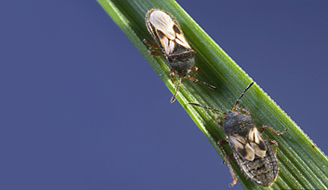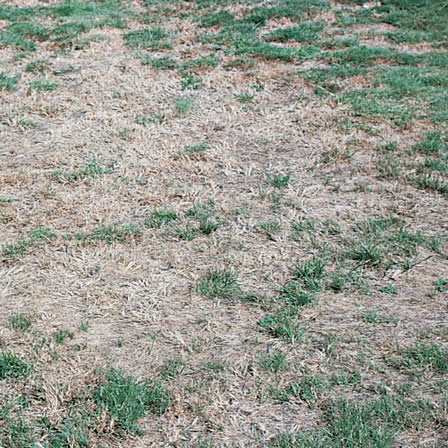
Chinch bugs are tiny bugs that can cause major damage to your lawn by sucking your grass blades dry and injecting them with poison. If you suspect you have chinch bugs, read this guide to learn how to find chinch bugs in your yard.
What Does Chinch Bug Damage Look Like?

Lawns affected by chinch bugs are often confused with lawns suffering from drought. Chinch bugs use their piercing mouthparts to suck moisture from grass blades, then inject a poison into the blades that interrupts water movement within the grass, causing the grass to die.
In the early stages of chinch bug damage, grass will begin to yellow. Next, grass will turn brown and die. As the grass dies, chinch bugs will move to the perimeter of the dead grass, causing dead patches of grass to spread outward.
What may begin as a small patch of dead grass will quickly grow into a large area of dead grass, constantly expanding outward.
One way to tell if you have chinch bugs and not drought is if the grass does not green up after it has been watered. If your grass remains dead, you might have chinch bugs.
When and Where Do Chinch Bugs Thrive?

Chinch bugs thrive in the southern United States and prefer St. Augustine and zoysia grasses. The pests are most active in late June through early September.
Damage typically occurs in the sunniest areas of your lawn, especially when the weather is hot or dry.
Thick, lush lawns are especially prone to chinch bug damage as the thick thatch offers a great place for adult chinch bugs to feed and lay eggs.
The Tin Can Test
If you suspect you have chinch bugs in your lawn, there are two ways to spot the bugs.
First, use your hand to spread the turf near the soil and look for chinch bugs. A magnifying glass may help as chinch bugs are so small.
The other way to look for chinch bugs is by conducting a tin can or float test. To perform a tin can test:
- 1. Get a metal cylinder that is open on both ends or has had both ends removed. Coffee canisters are great for this test.
- 2. Pick a patch of lawn and stick the metal cylinder 3 inches into the soil.
- 3. Fill the cylinder 3/4 full of water and continue to add water to maintain this water level for about 10 minutes.
- 4. Agitate or stir the turf that is underwater.
- 5. If you have chinch bugs, they will float to the top of the water. Count the number of chinch bugs you see. The threshold for treating your lawn is generally 15 or more chinch bugs per square foot.
Watch the video below for more information on the tin can test.
Found chinch bugs in your yard? Learn how to treat them in our how to get rid of chinch bugs guide. Click the right arrow below to read more.



